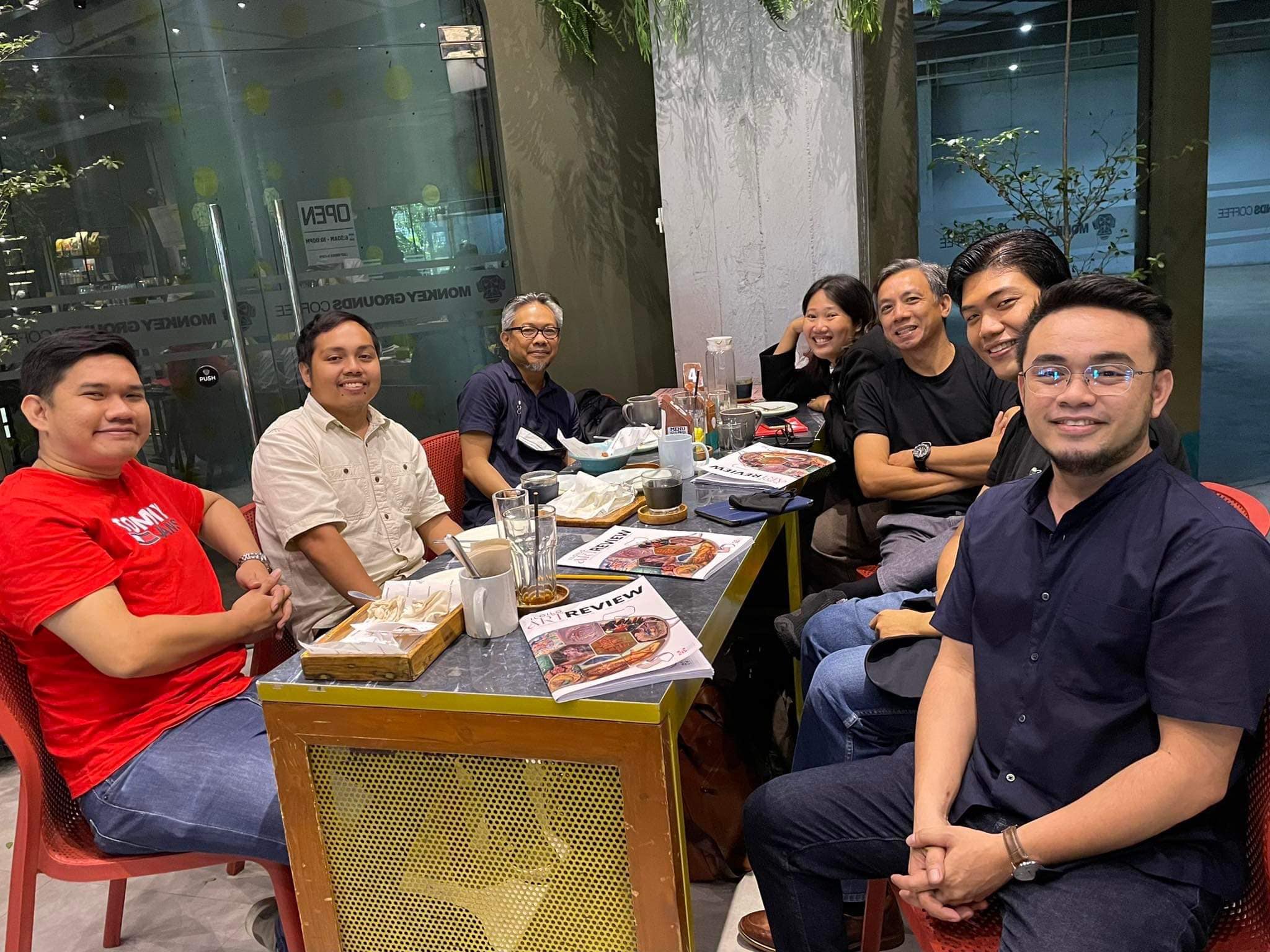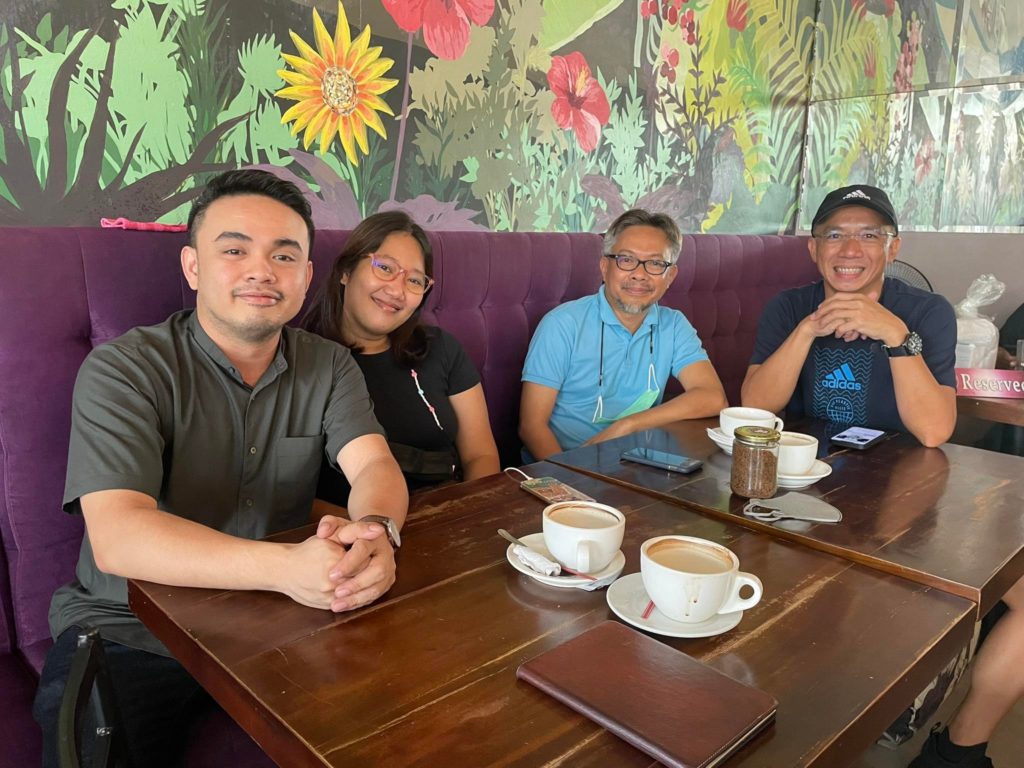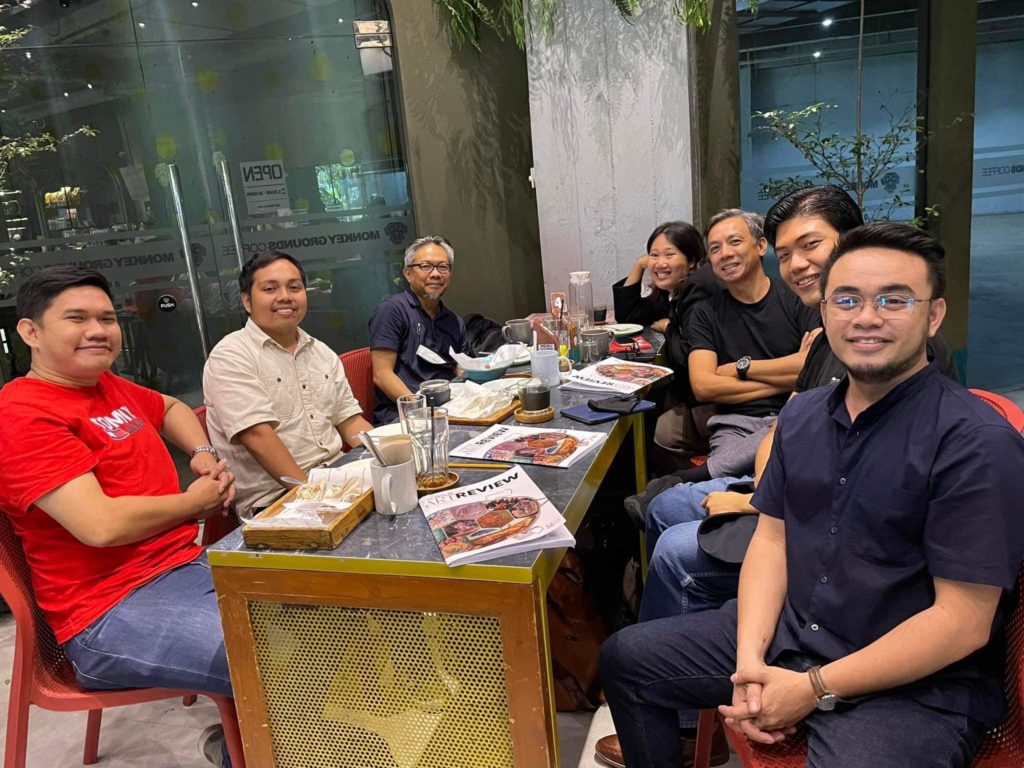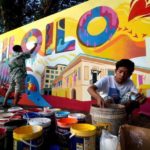
The Iloilo Critics Circle
One weekend in October 2022, I joined Dr. John Barrios, Noel Galon de Leon, and Allyn May Canja for a late morning coffee at the Book Latté. The taste of the coffee has escaped my memory, but I can wholly remember the conversation: art happenings, art writings, experiences and linkages to art, issues that surround our writing practice, our studies on art, mapping out who is doing a similar effort, and a brief sketch of the local arts and culture landscape.

Writing about art was the intersection with which we shared a common ground. Our vocations occupy the day job as an academic and educator, as a cultural worker and independent curator, as a book publisher and literary writer, as a researcher, and as a freelance journalist and blogger. Amazingly, we’ve all been writing about art, whether that is news, features, reviews, or criticism, from our respective standpoints and disciplines, after work or during free time.
That meeting gave us an opportunity to share insights about art criticism and practices and their role in a city that is experiencing an art rebirth. That day marked the birth of the Iloilo Critics Circle. I’m writing this as a monthsary celebration. The infant circle is six months old.
The next meeting, we invited writers whom we knew were involved with the arts, with a priority on female writers. Some popular names have declined for various personal reasons and have current professional engagements. Other brilliant names in the field of art writing have come to join the group, like John Anthony Estolloso and Theodore Ricardo Bautista, then Eric Abalajon.

All six are names that I look up with respect because of their integrity, competence, professionalism, experience, and expertise in this particular area of writing—multidisciplinary in such a way—not to mention their track record and academic background. They embody the characteristics that the Iloilo art community can be proud of.
Since then, I’ve been looking forward to reading their writings, enjoying the natural intellectual energy that they invested in their writings through distinct style, flow, tone, vocabulary, and language.
In the days that followed, we utilized online chat and face-to-face coffee sessions to discuss art, art exhibitions, artists, and artworks. The baby steps came in the form of inquiries and familiarizations, and the exchanges have contributed to our understanding of art through exhibitions. But sooner or later, we found ourselves as a habitué to art talks, dialogues, and meetings with artists. Certainly, we struggled with time, considering the voluntary nature of our being members of the Iloilo Critics Circle. These encounters, however, were valuable for they offered an opportunity for us to look into other facets of art development and to interact with various stakeholders, which has deepened our understanding of trends that shape the local art scene.

Amidst all the “what-have-yous,” we embarked on an ambitious and pioneering project of publishing an Iloilo Art Review covering art events in 2022, despite the fact that we did not have the financial resources to bankroll such an initiative. Without fuss, the Iloilo Critics Circle was able to release the journal with the help of artists, writers, art stakeholders, well-meaning individuals, organizations big and small, and corporate institutions that believe that art criticism is an important element that will help the growth of the Iloilo art community.
The Iloilo Critics Circle focuses on the visual arts at this time. I have learned quite belatedly of the existence of critics’ circles in other parts of the world, one as old as 110 years and with members numbering up to 500. The one closest to us is the Manila Critics Circle, which is now 42 years old, having been established in 1981, and which institutionalized the National Book Awards. The awards have since expanded to cover various categories, including art, art criticism, literature, science, social sciences, history, and business and finance, among others.
In other cities with rich arts and culture histories and traditions, there are critics’ circles for books, films, music, dance, theater, and the visual arts. Later on, and after much debate, some critics’ circles have integrated giving awards for exemplary work as part of their function.
In various conversations, I have mentioned that Iloilo has a robust arts and culture community with groups of literary writers, Hiligaynon writers, film makers, theater, dance, music, book clubs, animation, cartoonists, photographers, you name it. Because of this, Iloilo offers a well-rounded arts and culture experience. Everything that is enumerated doesn’t all happen in a day, but a museum or art gallery can consume your day here.
The development of local arts and culture is an ongoing engagement, and critics have a role to play. In his message during the launch of the Iloilo Art Review at the Mamusa Gallery, which I summarized here, Noel Galon de Leon put it succinctly when he said: The function of criticism is to constantly interrogate the conditions of life and the creative process of artists. Who really benefits from our public murals, from art exhibitions, or from ways of marketing the city as an art capital? I believe that the role of critics is essential, especially in a city that considers itself to be the art capital.


